May 19, 2025 | 23:07 GMT +7
May 19, 2025 | 23:07 GMT +7
Hotline: 0913.378.918
May 19, 2025 | 23:07 GMT +7
Hotline: 0913.378.918
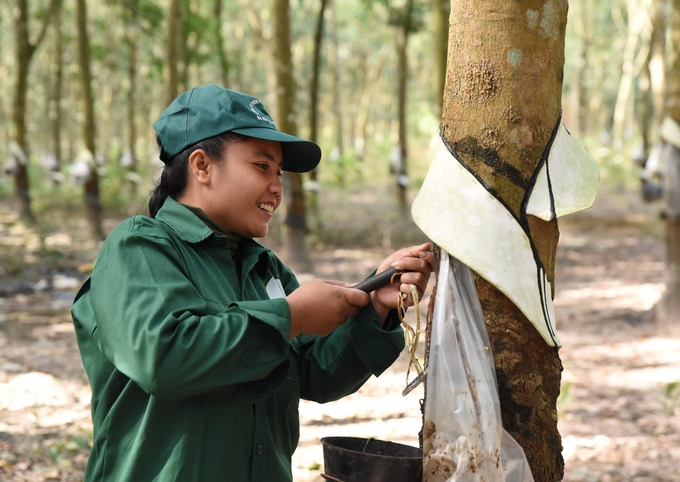
Rubber at Kampong Thom.
Saying goodbye to the Land of a Million Elephants, the film crew of the Vietnam Agricultural News immediately set off to Cambodia. Our first destination was to the south of the Land of Temples, located beside the Mekong River while bordering Tonlé Sap lake. To our knowledge, that place is also called the largest rubber plantation area in Indochina.
From Tay Ninh we went through Moc Bai International Border Gate. The road from Moc Bai to Tonlé Sap this season was so beautiful. On either side, the vast rice fields were in the ripe season. The signature palmyra palm swayed gently above the brimming-golden carpet. Just like a picture.
After years of ups and downs, the vast land in the south of Cambodia now becomes the capital of rubber trees, with an area of approximately 100,000 ha spread across the provinces of Kampong Thom, Siem Reap, and Preah Vihear. It is the result of a journey spanning nearly 15 years of the Vietnam Rubber Group (VRG) and its affiliated agencies.
It took almost an entire day for us to find Kampong Thom, where Chu Se - Kampong Thom Rubber Joint Stock Company was stationed. But we constantly got lost. Entering this place made us feel like going into a wild forest. All we saw was the overwhelmingly green rubber trees with closed canopy of tens of meters high.
Welcoming the crew, Nguyen Duy Linh, General Director of Chu Se - Kampong Thom Rubber Joint Stock Company gave out a shy smile. “Almost every group coming here ‘goes for a walk’ like that. The company has directed personnel to make signposts from outside the entrance to the office area, but perhaps the forest might have been too wide that there are not enough signs. It’s 16,268.68 ha we are talking about.”

General Director Nguyen Duy Linh introducing "the largest rubber plantation in Southeast Asia".
During the quite lavish dinner to welcome the film crew from his hometown, Nguyen Duy Linh briefed us about some features of Chu Se - Kampong Thom. The company's planting area is considered to be VRG's largest and of the best quality in the Kingdom of Cambodia. the plantation’s out is over 33,000 tons/year at peak. The total number of officials, employees and laborers so far is more than 3,200 people, including 150 Vietnamese and more than 3,050 Cambodians. The average income in the first 10 months of this year is VND 8.5 million /person/month.
“From a remote, impoverished land of 7 provinces in this region, the land is now greened with rubber trees under the supervision of 17 VRG companies. The white sap has brought a life-changing opportunity and a bountiful life for many poor people in difficult lands, contributing to affirming the increasingly solid friendship between the two countries”, said the General Director of Chu Se - Kampong Thom Rubber.
Also on a day in the last quarter of the year like this 15 years ago, Nguyen Duy Linh, leader of Chu Se Rubber Co., Ltd at that time, went to VRG's "headquarters" in Saigon to attend a preliminary meeting for the first 9 months of the year. Near lunch, Tran Ngoc Thuan, the leader of VRG, reached out to Nguyen Duy Linh and said, “Take your time to eat and then go to Cambodia immediately. The group has been assigned to do a project there. You must go there to survey and report to deploy it instantly.” That was the beginning of Chu Se - Kampong Thom.

The beautiful office buildings of Chu Se - Kampong Thom Rubber JSC.
The struggle was real, but fortunately thanks to the help, direction and facilitation of both countries’ Governments and VRG as well as the company's own efforts with the locality, people gradually changed their view and support the project. In 2010, the first rubber trees were planted on Kampong Thom land.
Those days were truly unforgettable. The land had just been reclaimed in the morning, and in the afternoon, new planting is organized. People who know guided those who did not. Vietnamese officers guided indigenous people. Communication, customs and habits were not fully understood still, but thanks to thorough instructions, things got better.
Taking us all to visit the vast rubber plantation by car and then running through the factory, the whole company's board of directors including Nguyen Duy Linh and Nguyen Tien Dung, Le Trung Kien, Dong Van Tan Dat were quite emotional somehow. Most of them were people who came to Kampong Thom in the beginning days, having tasted countless hardships to get today's achievements. The men were proud.
Once a wasteland, Chu Se - Kampong Thom is perhaps a very rare "rubber people community" now with more than 3,200 officers, workers and employees. Borrowing a car from the workers, we kept wandering around the villages lying amidst the vast rubber forest. There were residential areas, schools, temples, and even medical stations and supermarkets to serve staff and people. A warm and complete community, both materially and spiritually.
To develop this community, Chu Se - Kampong Thom has invested USD 78,000 to build a school with three classrooms, one library and two rooms for the teachers who are teaching more than 120 students. Chu Se - Kampong Thom also spends USD 215,000 to build the temple and purchase equipment in service of people’s religious needs. The Green Mart supermarket is located in the middle of the forest, but it is always busy with people coming in and out. More than a hundred kinds of goods are sold, including fish sauce, dried fish and many other products from Vietnam, almost nothing is lacking.

Chu Se - Kampong Thom puts great efforts to build a "rubber community" in Kampong Thom.
“Of course, the road ahead still has difficulties and challenges, but what Chu Se - Kampong Thom has achieved is the driving force for the ‘rubber brothers’ to build this place into a shining symbol of Vietnam - Cambodia solidarity, friendship and cooperation. I just hope everything will go well so that the Chu Se - Kampong Thom Rubber brand can shine on this land and make the Vietnam Rubber Group proud," said Nguyen Duy Linh.
Translated by Samuel Pham
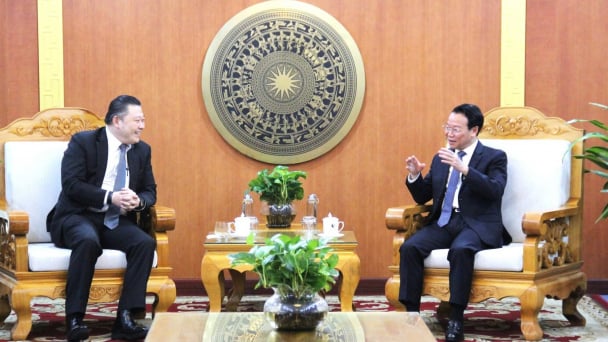
(VAN) Minister of Agriculture and Environment Do Duc Duy held a meeting with Soopakij Chearavanont, Chairman of C.P. Group, on May 15.
/2025/05/16/3800-0-nongnghiep-143756.jpg)
(VAN) Suntory PepsiCo Vietnam coordinated with the Ministry of Education and Training to implement an education program on water conservation, reaching nearly 1 million primary school students nationwide.
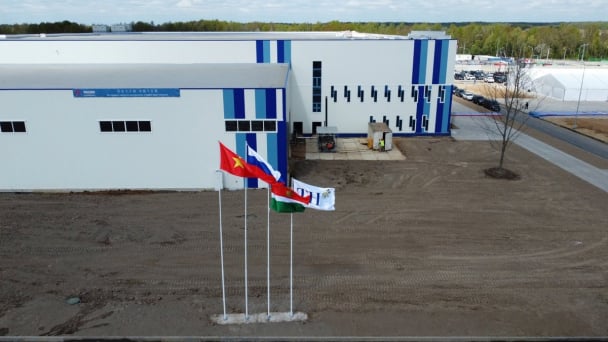
(VAN) Vietnam’s TH Group officially put its high-tech fresh milk processing plant into operation in the Russian Federation, marking a historic moment as the first TH true MILK cartons were produced in Russia.
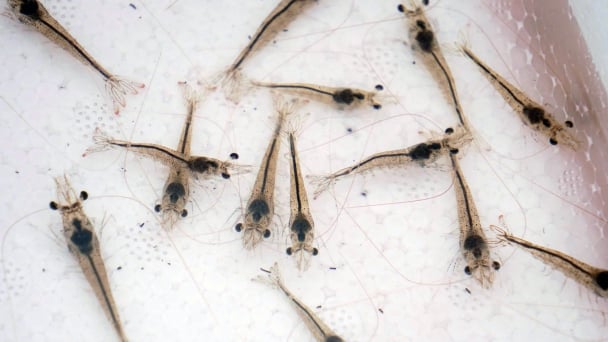
(VAN) Use of high-quality broodstock and biotechnology is regarded as the most effective approach to ensuring sustainable and economically viable shrimp aquaculture ahead of climate change and the emergence of increasingly intricate disease patterns.
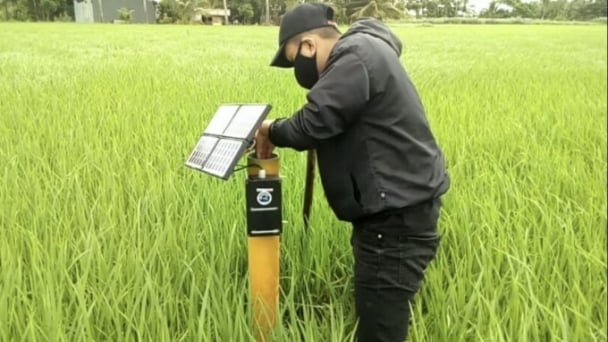
(VAN) Carbon farming is a form of agricultural practices that helps absorb more greenhouse gases than it emits, through smart management of soil, crops, and livestock.
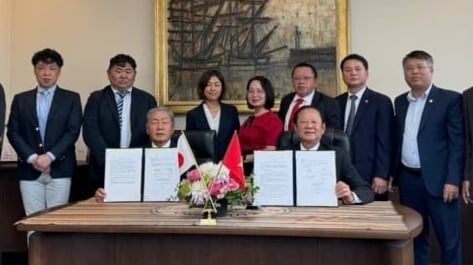
(VAN) This is a key content of the Memorandum of Understanding recently signed between the Vietnam Fisheries Society and Kunihiro Inc of Japan.
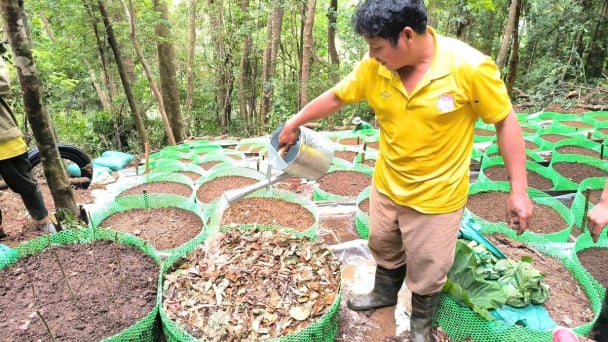
(VAN) To achieve the goal, local authorities and businesses in Kon Tum province have fully prepared the necessary conditions for the new Ngoc Linh ginseng planting season.